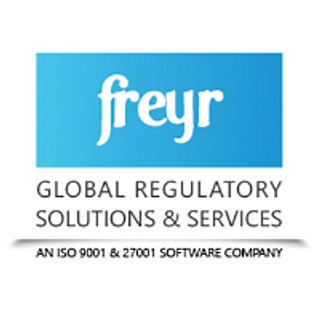Top 6 Cosmetic Artwork Regulatory Risks & How to Avoid Them
- Freyr Global Regulatory Solutions
- Sep 10
- 2 min read
Top 6 Regulatory Risks in Cosmetic Artwork & How to Mitigate Them
1. Non-Compliant Product Claims
Risk: Misleading or drug-like claims (e.g., “treats acne,” “heals skin,” “permanently stops hair fall”) may:
Reclassify your product as a drug/therapeutic good
Trigger regulatory investigations, recalls, or lawsuits
Mitigation:
Cross-check claims with market-specific regulations
Involve Regulatory & Legal experts in label approvals
Train marketing teams on compliant, non-therapeutic language
2. Lack of Claims Substantiation
Risk: Claims like “anti-aging,” “hypoallergenic,” “dermatologist tested” require scientific proof. Without substantiation:
Products may be deemed deceptive
Companies face fines, consumer complaints, or brand damage
Mitigation:
Maintain a claims substantiation file with clinical or lab data
Ensure evidence is scientifically valid, product-specific, and current
3. Incorrect Ingredient Listing
Risk: Non-compliance with ingredient labeling rules (e.g., INCI names, allergen declarations) can lead to:
Enforcement actions or product bans in key markets
Consumer trust issues
Mitigation:
Use Regulatory databases (e.g., CosIng, PCPC) to validate ingredients
Leverage Regulatory software for automation and accuracy
Stay up to date on regional ingredient disclosure requirements (e.g., EU’s allergen expansion)
4. Language & Translation Errors
Risk: Poor translations = unclear usage, regulatory breaches, or safety issues in multilingual markets (e.g., Canada, EU, Japan, Brazil, GCC).
Mitigation:
Use professional translators with regulatory experience
Conduct Regulatory review of all translated artwork
Consider cultural sensitivities and legal nuances in local markets
5. Omission of Mandatory Information
Risk: Missing details like:
Net content
Batch/Lot number
Expiry date
Responsible Person or distributor info
Can lead to:
Immediate non-compliance
Product seizure or recalls
Mitigation:
Maintain market-specific compliance checklists
Perform regular internal audits of artwork elements
Align with Regulatory intelligence updates
6. Failure to Adapt to Regulatory Changes
Risk: Regulations evolve quickly (e.g., EU allergen rule changes, USA MoCRA updates, ASEAN harmonization). Outdated artwork may:
Prevent market entry
Incur retroactive penalties
Mitigation:
Set up a Regulatory monitoring system
Subscribe to official updates and trade association alerts
Work with Regulatory partners to track and act on changes globally
Final Takeaway
Navigating cosmetic artwork compliance requires more than regulatory knowledge—it demands proactive processes, cross-functional collaboration, and constant vigilance across multiple jurisdictions.
Your Compliance Strategy Should Include:
✅ Pre-market artwork checks by Regulatory experts
✅ Real-time tracking of evolving global regulations
✅ Automated ingredient and claims validation tools
✅ Regular training for marketing, R&D, and packaging teams
✅ Strategic support from partners like Freyr for labeling, compliance, and audits







Comments